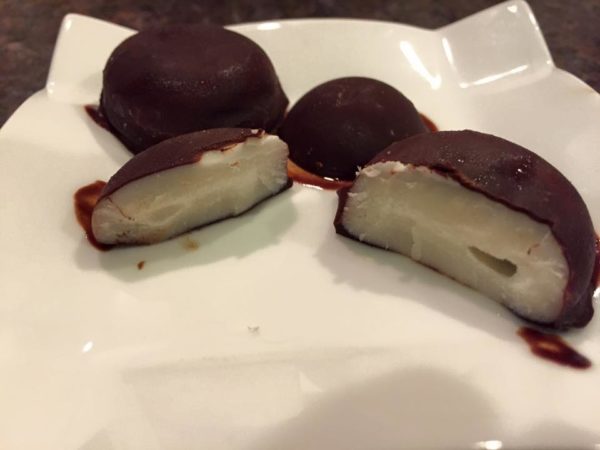
Do you find yourself wishing you could hit the snooze button instead of jumping out of bed feeling refreshed each morning?
Do you crave sugar, caffeine, or a NAP around 3 – 4 pm?
Have you been carrying around excess fat around your middle that won’t budge in spite of starving yourself and slaving away at the gym?
Whether you’re a busy professional or a professional mom, you need to stay focused and organized all day long and still have enough energy to say yes to enticing social events rather than falling into a heap because you can hardly keep your eyes open after working all day.
Watch this video to get the secret to more energy!
Register here!
Share this:

Are you feeling stuck?
Do you feel as if something is missing from your practice that's keeping you from delivering breakthrough outcomes for your clients?.
Recent Posts
Our Programs
Nutritional Endocrinology Practitioner Training (NEPT)
The Mastery and Certification tier is our flagship program and provides everything you need to feel confident as a practitioner who knows how to get results that lead to healthy and happy clients.
Functional Assessment Mastery
Explore the relationships between the most important hormones and their relationship with nutrition.
Functional Nutrition Mastery
Learn how to support your clients to eat and supplement in a way that reduces and eliminates chronic symptoms.
Medical Disclaimer: The information on this website is not intended to replace a one-on-one relationship with a qualified health care professional and is not intended as medical advice. It is intended as a sharing of knowledge and information from the research and experience of Dr. Ritamarie Loscalzo, drritamarie.com, and the experts who have contributed. We encourage you to make your own health care decisions based upon your research and in partnership with a qualified health care professional.
Disclosure: Sometimes (but not always), when I share resources in my programs, newsletter, and on my website, I'm using an affiliate link, which means I do make money if you buy. My credibility is extremely important to me; therefore, I only endorse the products, services, and people I believe in. DrRitamarie.com is independently owned and the opinions expressed here are my own.
Click here to see our Privacy Policy.











[…] 5 Cutting Edge Strategies to Balance Your Blood Sugar So You Can Melt Your Midline, Sharpen Your Foc… […]
Hi Rita, just listened to the thyroid webinar and found your presentation interesting but I have a couple of questions. Whilst I understand that hypothyroidism can lead to insulin resistance, so could well be a precursor to Type II diabetes, doesn’t insulin resistance usually lead to overall slightly raised BGs? So instigating the never ending slow rise in BGs because of slightly more insulin resistance and so more insulin is needed. If you suffer a spike in BG levels which then subsequently falls rapidly, wouldn’t this be more indicative of loss of phase 1 insulin release, rather than insulin resistance, if it falls rapidly then there isn’t much resistance? Phase 1 is released within the first few minutes of the stomach receiving something that requires insulin and that release is all over and done within the first 10 mins. So spiking at 20-30 mins is more likely to show that phase 1 hasn’t been adequate, and your phase 2 is actually picking up the tab and bringing your levels back down. Particularly when associated with low or normal fasting levels. I would have thought that low fasting, high spikes early that come down quickly, particularly when in someone of slim build, is more indicative of LADA, especially if the C-peptide is low or low normal. I would be really grateful if you could fill in the gaps for me. I am not a doctor or an endo, but have hypothyroidism, auto immune, low c-pep, low fasting (3.6-4.1 mmol/l), accompanied with high spikes, e.g. a banana = 4.1 prior to eating, 9.7 at 35 mins, 4.1 at 1 hour. p.s. exercise raises by BGs! HELP.
Hi Veronica,
The best way to access Dr. Ritamarie for personal or health questions is to become a member of a program. We offer a 2-month trial membership in our VITAL Community for under $20, and that will give you 2 opportunities (1 each month) to submit a question on the VITAL Q&A call. You can sign up here: http://www.VITALHealthCommunity.com.
Or, if you’d like more direct support for blood sugar issues and questions, you can become a B4 Be Gone member: http://www.B4BeGone.com. Self-study members get direct access to Dr. Ritamarie: 5 months of the VITAL Q&A calls and 5 months of “Office Hours” calls – both are open for Q&A.
Best wishes,
Stacey Terry
Vibrant Living Program Assistant
For Dr. Ritamarie Loscalzo
Some interesting questions here. Insulin resistance (high insulin) and secondary hypothyroidism often go together, and if you can imagine that under conditions of insulin resistance there is an effort to downregulate at the cellular level, and this is what secondary hypothyroidism is, then this makes sense. T3 actually tends to be high in a lot of cases but a lot of this gets converted to reverse T3. Excess cortisol also does this and we see that a lot with insulin resistance patients.
So the two do go hand in hand, and they are both metabolic dysfunctions so this isn’t surprising. There’s a lot more we need to learn here about the interplay between them and oddly enough our understanding of primary hypothyroidism, hormonal deficiency in other words, is quite good, but we don’t know near enough about the secondary form, the loss of hormonal function, thyroid resistance if you will.
Phase 1 defects tend to occur in diabetics mostly because insulin stores become depleted due to persistently high blood sugar. If someone has normal fasting then we wouldn’t suspect this. A GTIR like Dr. Kraft used to run will reveal the insulin curve pretty well though.
The phase 1 period is very brief though and people tend to confuse this with a delayed insulin response in general which is something else. So if you peak at an hour or two hours instead of the typical 45 minutes this will cause blood sugar to rise, as it accumulates in the blood at a higher rate prior to clearing. This pattern is something we see a lot with type 2 to various degrees.
It’s more important to see how high insulin goes and typically it goes too high with most people, most non diabetics as well, and most people suffer from hyperinsulinemia these days. Some do have LADA though and don’t really go up much at all. Now this is more of a signaling issue than the virtually absent insulin secretion of a type 1 and there’s lots that goes into insulin signaling, but it does have an autoimmune component so testing PP insulin and getting tested for autoimmunity can be very helpful.